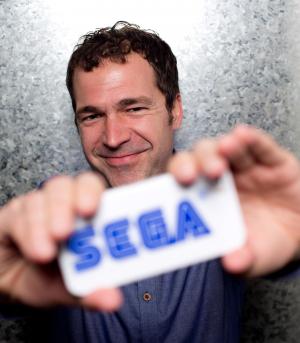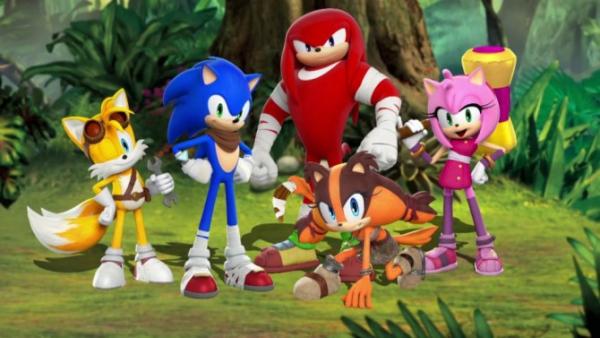Except for perhaps Nintendo’s Mario, few characters are as emblematic of a company as Sega’s Sonic the Hedgehog. The blue speedster first appeared in his own self-titled game for the Sega Genesis console in 1991 and has been both a video game and cultural icon ever since.
Despite the success and recognition of the Sonic brand, it has seen its fair share of ups and downs. Sonic didn’t transition very well into 3D, culminating to an apology from Haruki Satomi, the CEO of Sega Games, to fans for the quality of recent games like Sonic Boom: Rise of Lyric for the Nintendo Wii U.
Satomi is quoted as saying, “Sega in the 1990s was known for its brand, but after that, we’ve lost trust, and we were left with nothing but reputation… For this reason, we’d like to win back the customers’ trust, and become a brand once again.”
The focus on quality already seems to be paying off. The Sonic Boom animated TV show has completed its first season on Cartoon Network, and the Sonic Dash mobile game hitting a 150 million download milestone, Sonic the Hedgehog and Sega are speeding into a new era of popularity, largely driven by a new generation of gamers and fun promos like the villain Dr. Eggman’s takeover of Twitter.

[a]listdaily spoke to Chris Olson [pictured], COO of SEGA Networks (SEGA’s mobile division) and Chief Brand Officer for Sonic, Ivo Gerscovich, about how both Sonic the Hedgehog and therefore the Sega brand are seeing all new popularity and success on mobile devices.
You recently stated that Sonic games will have “a greater focus on quality.” How will that focus be conveyed to audiences
[Chris] We are committed to constantly improving the relationship we have with our players. I think you can see this in the high quality of our recent release, Sonic Dash 2: Sonic Boom — it has a 4.5 (out of 5) star rating. Similarly, the team working on the TV show is very focused on quality and the strong ratings the show has received to date is proof of that. So, we’ve already started rolling out this focus and you can expect to see it more.
Sega CEO Haruki Satomi recently spoke about how Sega needs to become a brand again. Can you describe that the renewed vision of the Sega brand is
[Ivo] For Sonic in particular, it’s key for us to restore trust and create quality games for fans worldwide. The vision is a simple one, though not always easy to accomplish: make excellent content with universal appeal.
We’ve already started on this path by ensuring that we do what it takes to produce enjoyable and fun titles for fans new and old, and with this year’s Sonic Dash 2: Sonic Boom, we’re happy to have another solid game in the Sonic roadmap for fans to enjoy.
Sonic Dash recently reached over 150 million downloads since its release. What was learned from its success
[Chris] We have been absolutely thrilled with how much Sonic Dash has resonated with players; there’s definitely a lot of love for the little blue guy. We’ve learned several things as a result:
- Our IP carries weight beyond the more traditional “core” gamer market. This is great news given the rise of gaming on smartphones and tablets.
- Gameplay must live up to player expectations. In the case of Sonic Dash, pairing Sonic with a running game was a natural fit.
- The power of Free-to-Play cannot be ignored. The title started off with a premium price tag, but after initial testing making the title free we saw an overwhelming response and never looked back.
- Iterative development is the key to success — it’s a marathon. The title has received about 40 (and counting) updates over its lifetime. By continually updating the game, we are making it a better experience for players and reinforcing the positive relationship we have with our players.

Has the Sonic Boom TV show helped to market games like Sonic Dash
[Chris] We are really excited at the transmedia potential between the TV show and Sonic Dash 2: Sonic Boom. Though show tie-ins will certainly help our marketing efforts, I think the most exciting thing is the chance to have the game complement the show and vice versa. We are constantly seeking new ways to strengthen our ties with both audiences and have some fun stuff planned for the future.
[Ivo] The TV show has been a great introductory point for a large number of new Sonic fans. Thanks to the high quality of the show and the excellent ratings, it helps the entire brand — games like Sonic Dash included!
With the Sonic fan base skewing toward a younger audience, what are the challenges in maintaining some of the nostalgia that made the character popular while appealing to a new generation at the same time
[Ivo] What’s fun about Sonic is that his appeal is wider than just a young audience. Kids from the 90s who grew up with Sonic on their Genesis are getting married, having children of their own, and introducing them to the world of video games. Sonic is one of those iconic characters whose original games are still fun to play today, but who also has new games, a brand new TV show, and a huge array of toys — offering content for kids and for older gamers. If anyone tries to tell you his games are just for kids, tell them to go try out Sonic Generations, pronto.
One of the challenges this presents, of course, is that as the audiences change in age, what they look for in a game might change, too. Sonic was never about guns or violence (we’ll overlook that one Shadow the Hedgehog moment) in the same way that Call of Duty might interest older games. But there’s something magical about his design that makes him continue to appeal, even 24 years after his creation. So, even as our audiences might grow older and play other games, making a game that appeals to everyone can sound like a tricky thing, on paper. How do you reach audiences that could be literally 20 or more years apart in age
The answer is more simplistic than it appears, and all you have to do is play the original Sonic titles to see it.
It’s not about building games for kids or games for adults. There’s no need to segment the audience in such a way and force out one or the other. The solution is in building a quality game that anyone can enjoy, no matter their age. Sonic is a rare brand in that it has such a strong potential for this, and for us, that universal enjoyment and appeal, no matter your age, is exactly what makes him so special.

